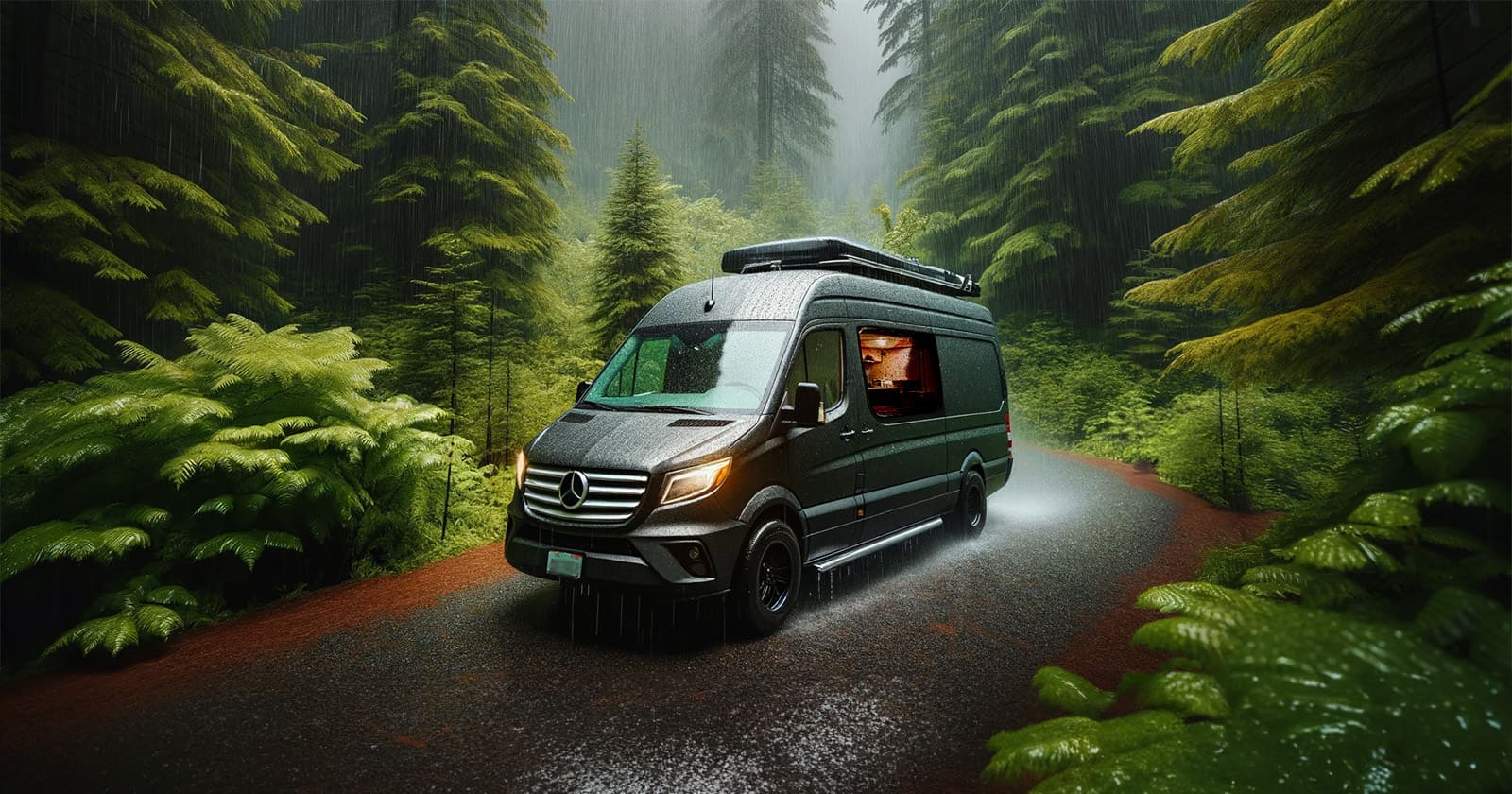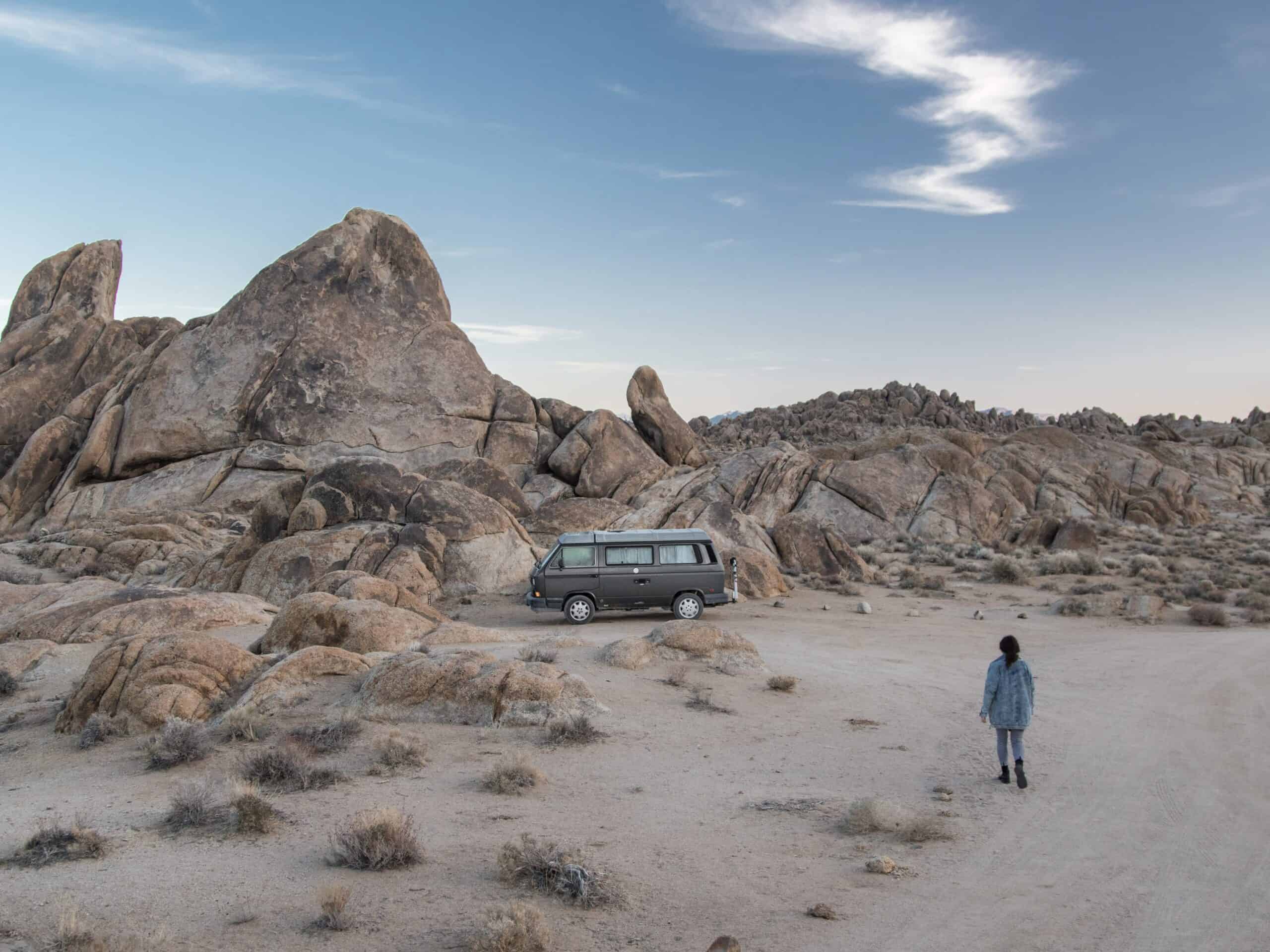A Vanlifer’s Guide to Mountain Camping Without Hookups
It’s summer, and that means it’s time to head up. If you can’t go north, then heading up a mountain is the next best thing, and since there are so many options for dry camping in the mountains, you’re sure to find a wonderful spot to escape the summer heat and enjoy the beauty of streams, evergreen trees, and the birds that like to call the mountains home.
All that said, it is important that you know what you’re doing before you go dry camping in the mountains. Lucky for you, we’re here to share all of our best tips to help you have a successful (and totally fun) adventure!
Tip #1: Find the Perfect Mountain Camping Spot
First, you will need to find the perfect dry camping spot in the mountains. As mentioned above, these are actually pretty plentiful, so you shouldn’t have a hard time locating the ideal spot. Sno-Parks (parking lots cleared of snow) are one great option, as these lots aren’t used for snow sports in the summer months, and overnight camping is allowed. National forest dispersed camping and dry camping campgrounds are also an option, and some mountainous areas even play host to some other types of government-owned land.
To find the ideal camping spot, check out RV Life Campgrounds, take a look at the National Forest Service website, and search the internet for Sno-Parks that might make good camping spots.
Tip #2: Go at the Right Time
Mountain camping is absolutely gorgeous during the summertime. The sun is shining, streams and rivers are running strong, and the animals are out and about. On the flip side of that, dry camping in the mountains in late fall, winter, or early spring is sure to be a cold and uncomfortable experience. Therefore, we recommend saving your mountain adventures for June–September.
Tip #3: Avoid Camping on Riverbanks When Dry Camping in the Mountains
When choosing your campsite, it’s usually best to avoid camping right next to a river or stream. This is because flash floods have been known to happen and could completely ruin your trip—and your RV. Yes, it’s nice to fall asleep to the sound of rushing water, but we don’t think it’s worth the risk.
Tip #4: Ensure Your Vehicle Can Handle the Drive
Driving up a mountain can be rough on a vehicle, especially if that vehicle happens to be on the older side. On top of that, roads at higher altitudes are known for being rough due to the water that tends to run over them during the spring and summer. For this reason, you will want a tough vehicle that can handle steep climbs, high altitudes, and bumpy roads.
Tip #5: Carry Essential Tools
Even the heftiest of vehicles isn’t immune to issues. Make sure you go in prepared with tools, extra fuel, a tow rope, and spare parts (such as tires and other parts that are likely to break). These things will help keep you up and running when issues come up, so you can continue to enjoy your trip even if roadside assistance can’t get to you.
Tip #6: Download Directions Before Dry Camping in the Mountains
Many mountain dry camping locations are very remote. For this reason, it’s easy to lose cell signal entirely while driving mountain roads to get to your campsite. Make sure you download GPS directions to your campsite before you leave in order to avoid getting lost along the way. We like to use the RV Life app for this!
(Psst! Carrying a paper map for extra measure isn’t a bad idea!)
Tip #7: Be Prepared for Altitude Sickness
Altitude sickness is a real thing, and it is no fun. We recommend heading into your mountain dry camping trip prepared to be sick as your body adjusts to the altitude and counting yourself lucky if it doesn’t happen. Allowing your body to rest, drinking plenty of water, and taking ibuprofen, acetaminophen (Tylenol), and anti-nausea medication as needed will help.
Tip #8: Pack Extra Drinking Water
Speaking of drinking water, it’s important to note that it’s much easier to become dehydrated at high altitudes. Make sure you pack extra drinking water and stay hydrated during your time dry camping in the mountains.
Tip #9: Keep the Lower Oxygen Levels in Mind
The air gets thinner as you get higher up, and the lower oxygen levels are no joke. Until you get accustomed to the change, breathing can be more difficult. For this reason, it’s a good idea to plan on easier hikes and climbs at the beginning of your trip and save the more strenuous workouts for the end.
Tip #10: Swap Lighters for Matches When Dry Camping in the Mountains
Another thing that happens as the oxygen levels get lower? Fires become much more difficult to light. In fact, beginning at 8,000 feet, many people find they can’t get their lighter to work at all. Swapping lighters for good old-fashioned wood matches might help.
Tip #11: Know That Propane Appliances May Have Trouble
In addition to your lighter, you might also find that your propane appliances have trouble working properly. The pilot light on your gas fridge may not want to stay lit, and the water heater may not light up at all. You might also have trouble using the propane stove and oven in your van.
Packing a good cooler and an alternate way to cook your food might be a good idea.
Tip #12: Adjust Your Generator
Because there is less oxygen in the air at high altitudes, you may find that your generator has a hard time starting (or won’t start at all). Don’t worry! You can fix this by adjusting the little knob on the generator to the correct altitude. This should get you up and running again.
Tip #13: Pack for Cooler Weather
As we said before, it’s best to head into the mountains in the summer. That said, it’s important to keep in mind that summer in the mountains is not the same as summer down lower. It’s much cooler, and you might even find yourself wearing long pants and a jacket during the day. Pack accordingly.
Tip #14: Don’t Rely Too Heavily on Solar Power or Starlink
Finally, you will want to make sure you aren’t relying solely on solar panels for power. Additionally, if you absolutely need the internet, you will want to stay somewhere that has cell service and avoid relying on Starlink. This is because the tree cover on most mountains is pretty heavy, meaning solar panels and Starlink will likely have a hard time working properly.
With these tips, you should be able to go out there and have a wonderful time dry camping in the mountains.




